Abstract
Epidemiological publications regarding the carcinogenic potential of asphalt (bitumen) are reviewed. In 1984 the International Agency for Research on Cancer (IARC) stated that there is "inadequate evidence that bitumens alone are carcinogenic to humans." They did, however, conclude that animal data provided sufficient evidence for the carcinogenicity of certain extracts of steam refined and air refined bitumens. In the absence of data on man, IARC considered it reasonable to regard chemicals with sufficient evidence of carcinogenicity in animals as if they presented a carcinogenic risk to man. Epidemiological data for man accumulated since the IARC report do not fulfil the criteria for showing a causal association between exposure to asphalt and development of cancer. The studies cited all suffer from a lack of data on exposure or potential confounders, which are necessary to establish whether or not such an association may or may not exist. In view of the evidence (or lack thereof) regarding asphalt today, an appropriate public health attitude suggests at least that action be taken to protect those working with asphalt by monitoring the workplace, taking whatever steps are possible to minimise exposures and to inform workers of potential hazards. At the same time, a need exists for well designed analytical epidemiological studies to determine whether a risk of cancer in man exists from exposure to asphalt.
Full text
PDF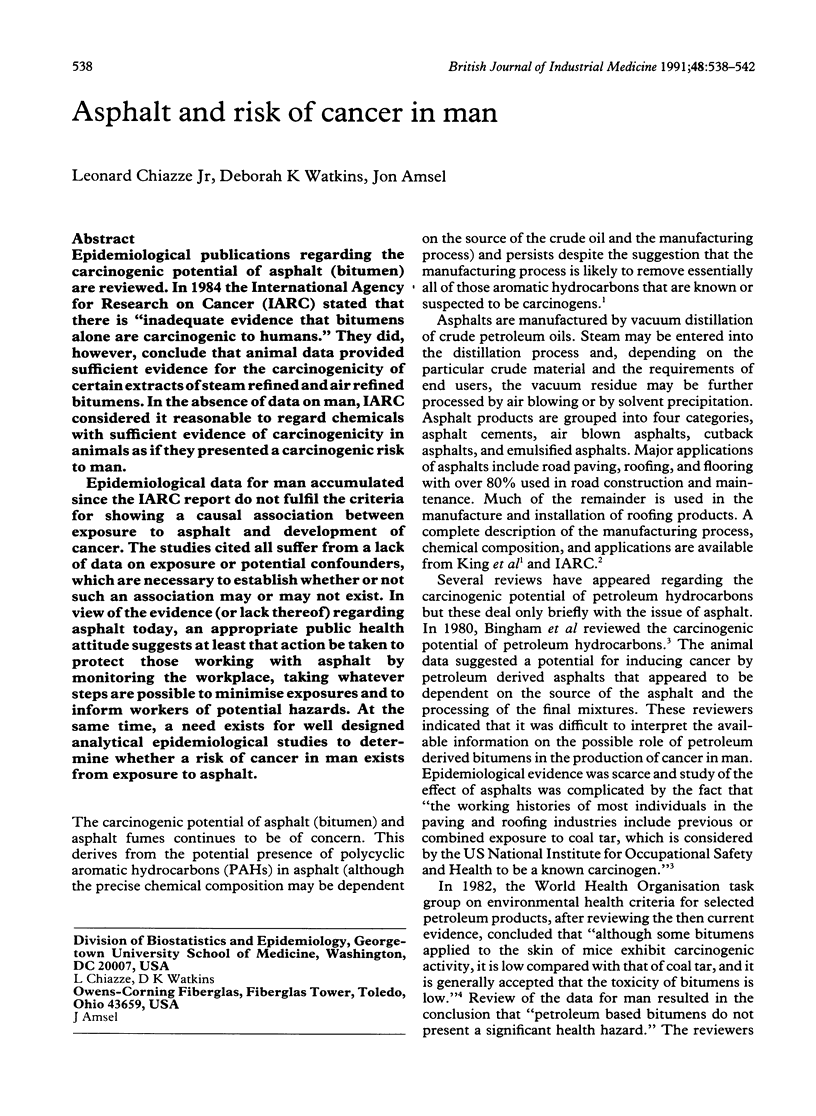
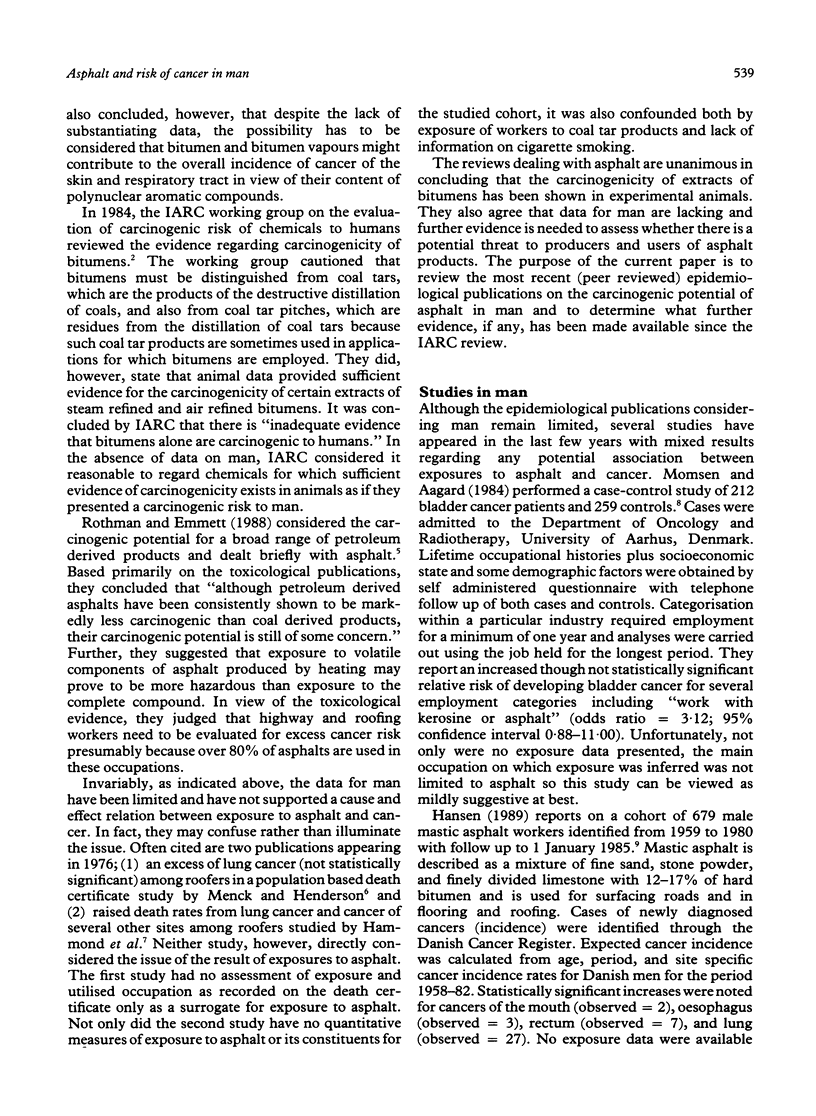
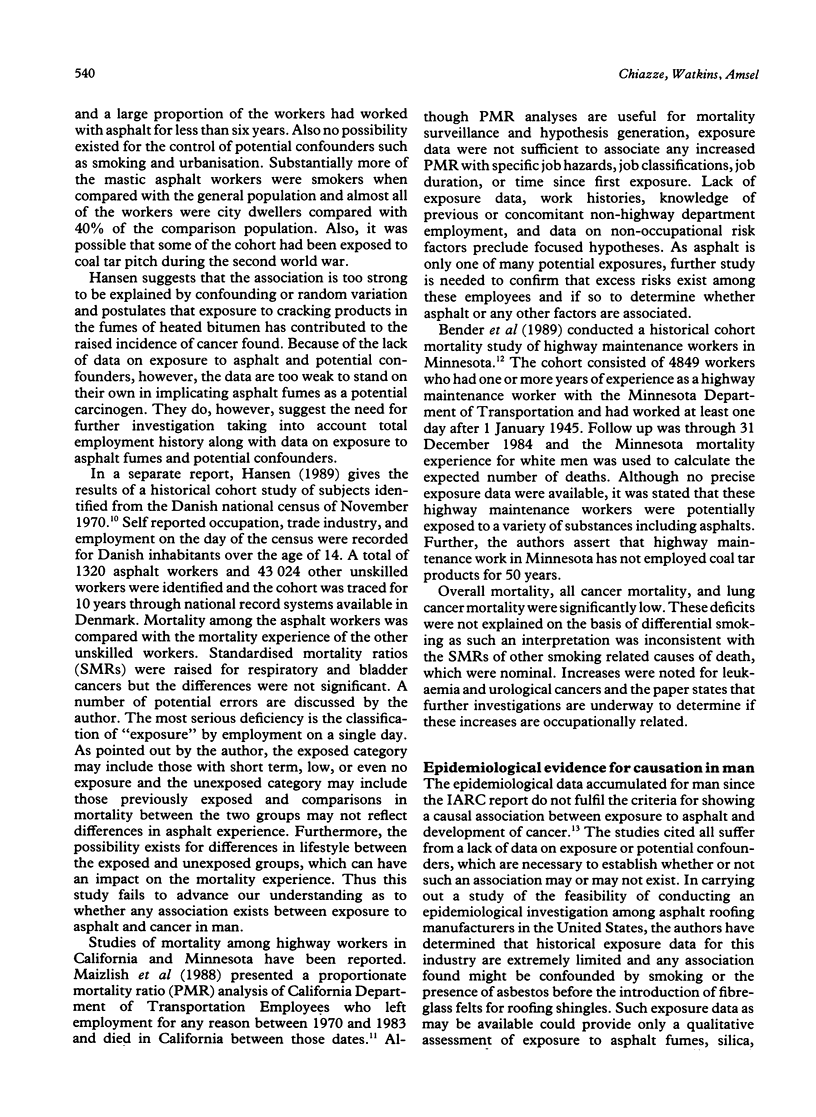
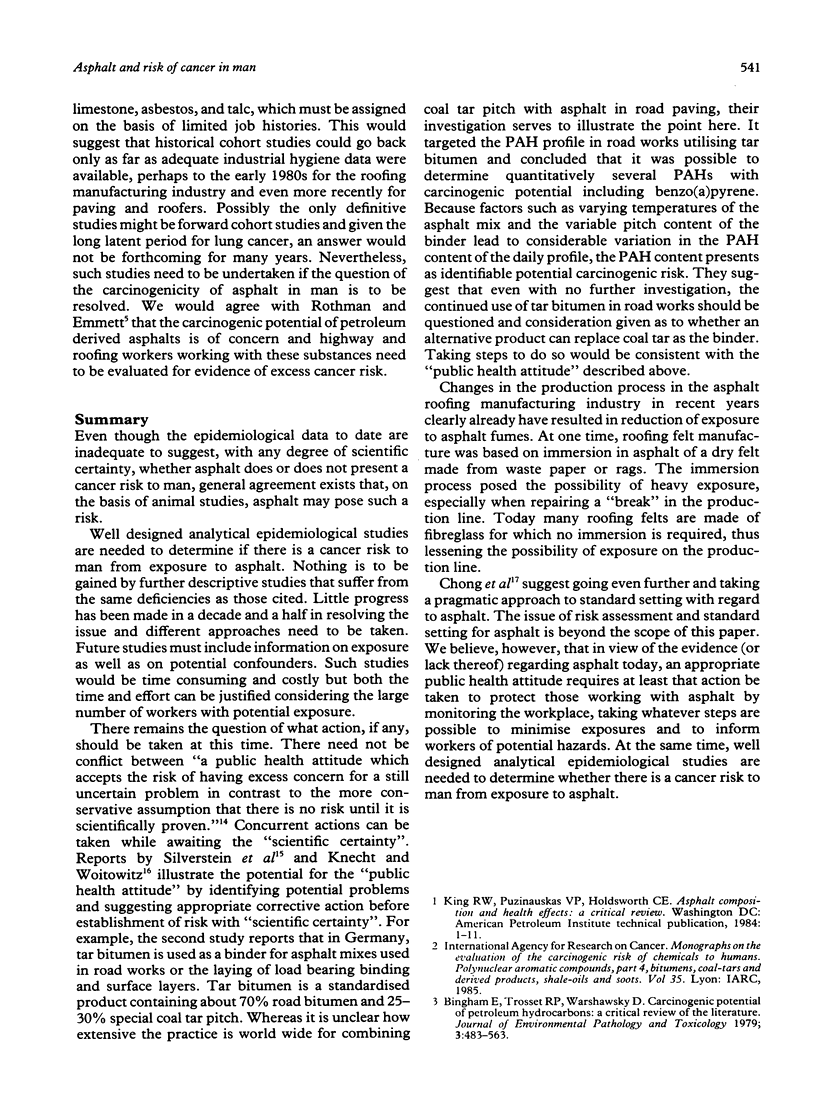
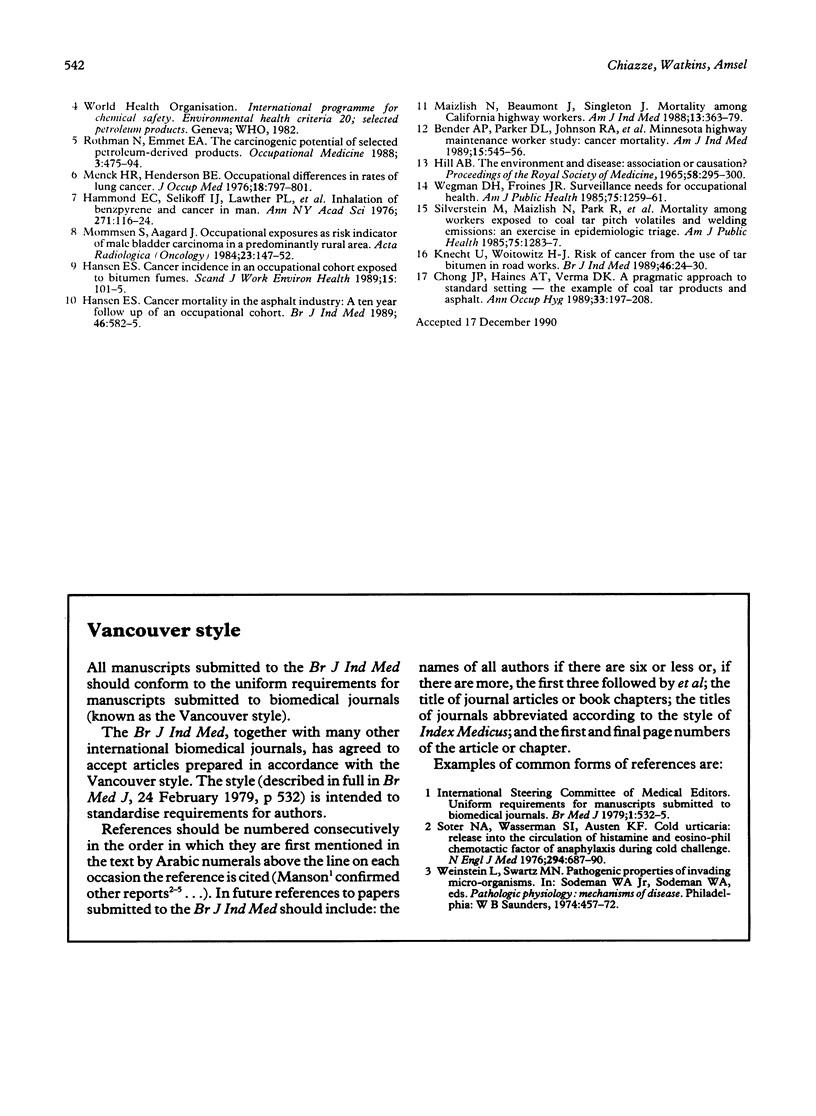
Selected References
These references are in PubMed. This may not be the complete list of references from this article.
- Bender A. P., Parker D. L., Johnson R. A., Scharber W. K., Williams A. N., Marbury M. C., Mandel J. S. Minnesota Highway Maintenance Worker Study: cancer mortality. Am J Ind Med. 1989;15(5):545–556. doi: 10.1002/ajim.4700150507. [DOI] [PubMed] [Google Scholar]
- Bingham E., Trosset R. P., Warshawsky D. Carcinogenic potential of petroleum hydrocarbons: a critical review of the literature. J Environ Pathol Toxicol. 1979 Dec;3(1-2):483–563. [PubMed] [Google Scholar]
- Chong J. P., Haines A. T., Verma D. K. A pragmatic approach to standard setting--the example of coal tar products and asphalt. Ann Occup Hyg. 1989;33(2):197–208. doi: 10.1093/annhyg/33.2.197. [DOI] [PubMed] [Google Scholar]
- HILL A. B. THE ENVIRONMENT AND DISEASE: ASSOCIATION OR CAUSATION? Proc R Soc Med. 1965 May;58:295–300. [PMC free article] [PubMed] [Google Scholar]
- Hammond E. C., Selikoff I. J., Lawther P. L., Seidman H. Inhalation of benzpyrene and cancer in man. Ann N Y Acad Sci. 1976;271:116–124. doi: 10.1111/j.1749-6632.1976.tb23100.x. [DOI] [PubMed] [Google Scholar]
- Hansen E. S. Cancer incidence in an occupational cohort exposed to bitumen fumes. Scand J Work Environ Health. 1989 Apr;15(2):101–105. doi: 10.5271/sjweh.1875. [DOI] [PubMed] [Google Scholar]
- Hansen E. S. Cancer mortality in the asphalt industry: a ten year follow up of an occupational cohort. Br J Ind Med. 1989 Aug;46(8):582–585. doi: 10.1136/oem.46.8.582. [DOI] [PMC free article] [PubMed] [Google Scholar]
- Knecht U., Woitowitz H. J. Risk of cancer from the use of tar bitumen in road works. Br J Ind Med. 1989 Jan;46(1):24–30. doi: 10.1136/oem.46.1.24. [DOI] [PMC free article] [PubMed] [Google Scholar]
- Maizlish N., Beaumont J., Singleton J. Mortality among California highway workers. Am J Ind Med. 1988;13(3):363–379. doi: 10.1002/ajim.4700130306. [DOI] [PubMed] [Google Scholar]
- Menck H. R., Henderson B. E. Occupational differences in rates of lung cancer. J Occup Med. 1976 Dec;18(12):797–801. doi: 10.1097/00043764-197612000-00005. [DOI] [PubMed] [Google Scholar]
- Mommsen S., Aagard J. Occupational exposures as risk indicator of male bladder carcinoma in a predominantly rural area. Acta Radiol Oncol. 1984;23(2-3):147–152. doi: 10.3109/02841868409136003. [DOI] [PubMed] [Google Scholar]
- Rothman N., Emmett E. A. The carcinogenic potential of selected petroleum-derived products. Occup Med. 1988 Jul-Sep;3(3):475–494. [PubMed] [Google Scholar]
- Silverstein M., Maizlish N., Park R., Mirer F. Mortality among workers exposed to coal tar pitch volatiles and welding emissions: an exercise in epidemiologic triage. Am J Public Health. 1985 Nov;75(11):1283–1287. doi: 10.2105/ajph.75.11.1283. [DOI] [PMC free article] [PubMed] [Google Scholar]
- Soter N. A., Wasserman S. I., Austen K. F. Cold urticaria: release into the circulation of histamine and eosinophil chemotactic factor of anaphylaxis during cold challenge. N Engl J Med. 1976 Mar 25;294(13):687–690. doi: 10.1056/NEJM197603252941302. [DOI] [PubMed] [Google Scholar]
- Wegman D. H., Froines J. R. Surveillance needs for occupational health. Am J Public Health. 1985 Nov;75(11):1259–1261. doi: 10.2105/ajph.75.11.1259. [DOI] [PMC free article] [PubMed] [Google Scholar]


